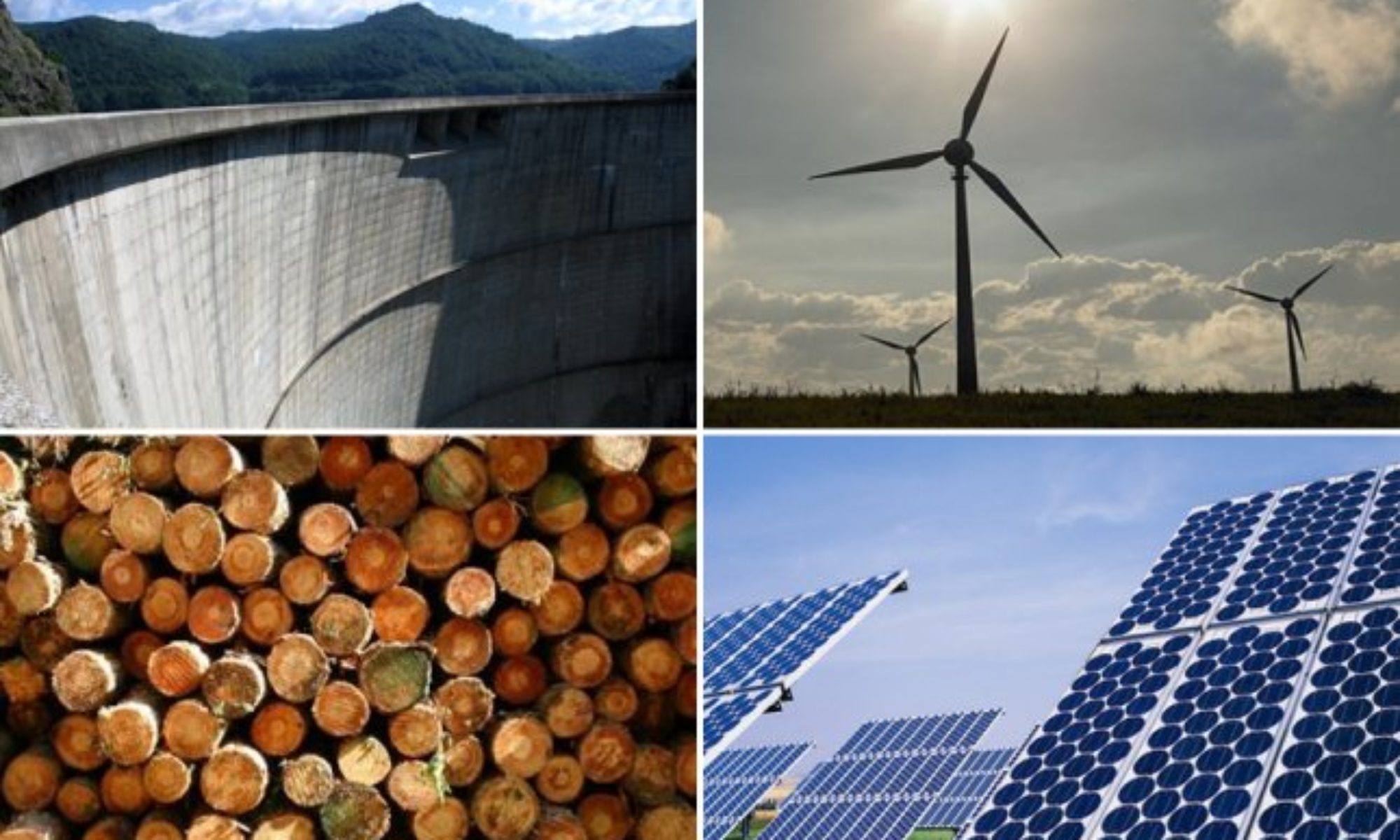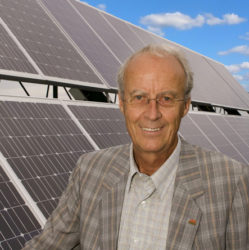3. december 2009
A Climate for Renewables
There will be many hills to climb before we reach our renewable energy goals.
by Hélène Pelosse, IRENA
London, UK [Renewable Energy World Magazine]
Hiking is one of my favorite outdoor activities. Twenty years ago, my father and I went on a trip to explore several glaciers. It was a special experience for us, and one of my fondest memories. So you can imagine my horror to see recent photos of these very same glaciers that showed how much they had receded. Just 20 years ago, they were majestic examples of the Earth’s natural beauty. Now, they are case studies of a planet in crisis.
Sadly, my story is not an isolated tale. There is no shortage of predictions about what the world will look like in the future if carbon emissions continue to rise. All of them are negative. Glaciers will melt. Species will become extinct. And extreme weather conditions will proliferate.
Yet, despite these grim prognostications, there is reason for hope. As the dangers of climate change become more readily apparent, the international community is joining together to explore the opportunities in this crisis. In fact, the creation of the International Renewable Energy Agency (IRENA) is just one example of this new spirit of global cooperation.
From my office chair at IRENA’s headquarters in Abu Dhabi, United Arab Emirates (UAE), I have been fortunate to witness this phenomenon first hand. The fact that IRENA is based in one of the world’s most important oil producing countries sends a powerful message to the world that we can not rely on the energies of the past to power the future.
IRENA is the first intergovernmental organization tasked with providing support and advice to its member states on implementing effective framework conditions for the transition towards a new era of increased renewable energy, and I’m grateful to have a front row seat for the proceedings.
I believe the turn towards renewable energy will be as influential as the Industrial Revolution. I am not the only one who thinks so. This is why so many countries have joined IRENA. Our organization has grown quickly, and the sheer size of our member roster is telling. We launched in January 2009, the initial idea coming from Germany, then Spain and Denmark joined in. Over the year, almost 50 countries got involved in the founding process. By the autumn of 2009, dozens more had signed on, bringing the total number of IRENA member states to 137. The United Nations has 192. It’s difficult to believe that when IRENA first began, some of us thought it would be a success to have 30 countries on board.
It is clear that many countries are ready to embrace renewable energy. Although renewables are only one approach to mitigating the complex challenge of global warming, it is one of the best strategies we have. The spin-off benefits of a renewable powered future are simply too good to ignore. By their very nature, renewable energies are secure, affordable, easily accessible, and clean. And because of these traits, it can preserve the environment and protect our climate. It can boost economic growth and create local jobs that will lead to regional development. It can even increase social cohesion and make the world’s energy supplies more secure.
Renewable energy technology is progressing by leaps and bounds. Research and development in green technology is no longer restricted to European countries such as Germany, Spain, and Denmark. Just last year, for example, China surpassed Japan as the world’s leading producer of photovoltaic cells.
Remember when computers were so rare that only scientific researchers had access to them? Or perhaps you might recall when brick-sized mobile phones were so expensive that they belonged only to Hollywood producers and investment bankers. As with all technology, prices of renewable equipment are bound to come down as these products become more mainstream and manufacturers achieve economies of scale. I would not be surprised if renewable technologies become so common that we are able to purchase small-scale versions for our homes in supermarkets very soon.
Earlier this year, at least 64 countries had policies to promote renewable power generation. India recently announced an ambitious Solar Plan aiming to generate 20 GW from sunlight by 2020, starting from its current 2.12 MW. The EU has set a target of 20% renewable power by 2020 and is currently drafting legislation to support this goal.
With the advances in technology and the plans in place, we are starting to see incredibly ambitious projects take form. South Africa is developing a 100-MW concentrating solar power project. Norway will be opening the world’s first osmotic power plant outside Oslo as REW goes to press. In Bangladesh, as of March 2009, the renewable energy company Grameen Shakti had installed more than 220,000 solar home systems in rural areas that turn houses into small power plants. Morocco and India both have plans to create preferential zones for renewable energy technology production. And in IRENA’s back yard in the oil-producing UAE, the city of Masdar plans to establish a similar renewable energy technology zone.
The world’s renewable energy sector will grow. We have already seen an increase in the production of renewable energy over the last decade. Last year, both the United States and the European Union added more power capacity from renewables than from conventional sources. And consider this: an estimated US$120 billion was invested in renewable energy worldwide in 2008, almost double the $63 billion invested in 2006.
All of these developments are taking place at an important time in world history. Science has shown that we must change the way we produce and consume energy or face a future ravaged by warmer temperatures.
Current methods of energy generation produce negative effects that are rarely shown on our utility bills, but all of society pays for them. What we emit into the atmosphere today will influence the planet for decades to come and possibly far longer, affecting generations to come.
There is an even more pragmatic reason for pursuing a renewable energy future. Renewables could provide an unlimited supply to meet the needs of the estimated 10 billion humans that will inhabit Earth by 2050. Renewable energy’s greatest benefit is perhaps that it is accessible for every country in the world. Most regions of the globe have access to resources such as sun, wind, water, biomass, agricultural residue, or the Earth’s heat. We have begun to harness these resources in new and exciting ways that help countries all around the world help themselves.
We have already seen what happens when creative people design things that take advantage of renewable power. This innovation has resulted in products such as solar home systems in Ethiopia or eco-friendly cooking stoves in India. Many more innovative products are on the way. Around the world, entrepreneurs are hard at work developing clever market-based solutions that deliver safe and affordable energy to the 1.6 billion people without access to electricity, a market estimated at $500 billion.
In addition to helping alleviate conditions of poverty, the renewable energy transformation allows developing countries to avoid making some of the mistakes industrialized nations have made in the past. Developing nations can leap over interim technologies that were adopted and then discarded in favor of more efficient advances. It also allows industrialized countries to produce energy in a sustainable manner, harvesting resources at their doorsteps. Furthermore, renewables will advance technological sectors around the world and create a new class of knowledge worker. The future looks bright for us all.
In many ways, this transition is much like the hiking and climbing I enjoy so much. The journey won’t be easy, and it must be taken one step at a time. There are bound to be innumerable peaks and valleys to pass through. But just as a group of climbers eventually reaches a summit and gets to see the spectacular surroundings from the top, the international community will also get to see a whole new world.
As a mother of three, I want to help create a world I will be proud to pass along to my children. And I know others who are equally passionate about renewable energy. The transition to clean energy is an enormous challenge and an unprecedented opportunity. History shows that humanity is capable of great achievements: climbing to a renewable energy future will be its greatest legacy.
Hélène Pelosse is the interim director general of IRENA


If some one needs to be updated with hottest technologies therefore he must be go to see this
web site and be up to date all the time.